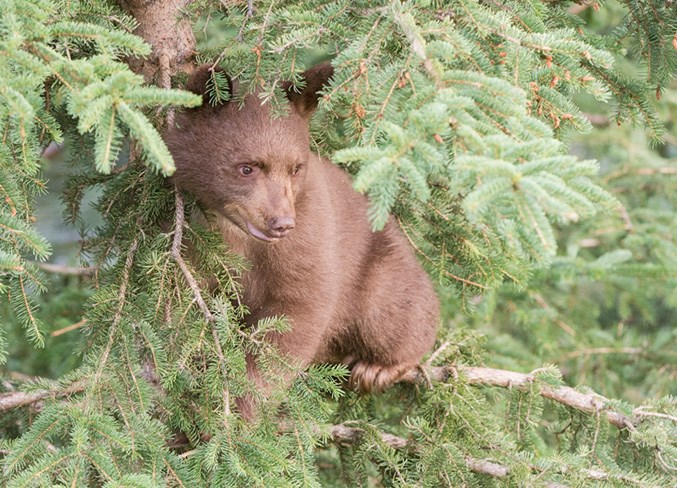Early snow has guaranteed two orphaned bear cubs will spend the winter hibernating in the care of the Cochrane Ecological Institute (CEI).
The news followed an Oct. 9 meeting between CEI and Alberta Environment and Parks (AEP), and was greeted with excitement by CEI president Clio Smeeton.
“We are thrilled to bits, and I’m sure the cubs would be, if they knew about it,” Smeeton said with a laugh.
The two cubs – Charlie and Maskwa – were initially to be released between Oct. 11 and 15, as a condition of AEP’s black bear rehabilitation policy. CEI education director Lisa Dahlseide said the institute has continually pushed back against that release date, as it fell during the fall black bear hunt in Alberta. According to Dahlseide, the release date also put the cubs at greater risk from predators like coyotes, lynx, bobcats and other bears.
“The bear cubs should be 1.5 to two times the size of a bear cub of their age in the wild,” she said. “That ensures a better chance of a successful release, and these guys just weren’t quite at that weight, as well, so we were really happy that they get to over-winter.”
While the cubs have adapted well to rehabilitation, Dahlseide said there were concerns over their weight. Maskwa, in particular, is very underweight after nearly being killed in a collision with a car, and is also believed to have been blinded in one eye.
“For release weight, they should be a minimum of 80 pounds,” Dahlseide said. “We haven’t weighed them because they don’t have any human interaction, but we were doubtful that they were actually at that 80-pound mark.”
According to Smeeton and Dahlseide, 30 years of research indicates an earlier release greatly decreases a cub’s chance of survival.
“Science shows releasing in the fall, there’s about a 30 per cent survival rate, whereas releasing in the spring gives them up to a 90 per cent chance of survival,” Dahlseide said.
Smeeton added while bear cubs might be able to burrow for hibernation, they can’t provide the heat that a mom would provide and won’t benefit from mother’s milk to gain weight during hibernation.
In the end, CEI had to thank mother nature for an extension of the cubs’ care. The government’s policy does allow regional supervisors to decide what should happen to the cubs on a case-by-case basis, according to Smeeton, and the early onset of snow was cited by the regional supervisor in control of CEI’s jurisdiction as the rationale for allowing the cubs to stay.
“I think that the South Saskatchewan AEP department made an extremely sensible, far-sighted and good decision by deciding to over-winter the bear cubs,” Smeeton said.
Now set for a spring 2019 release, the cubs are currently preparing for hibernation. Dahlseide said CEI will slowly taper off the food supply to trigger the hibernation process, and will provide an insulated artificial den for the cubs to sleep in.
Dahlseide added, ultimately, the institute is grateful both cubs can spend the winter and gain more weight.


